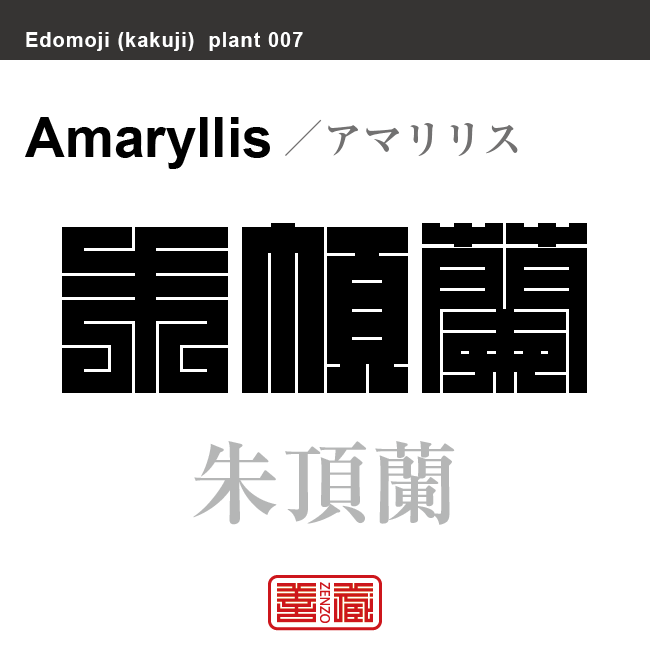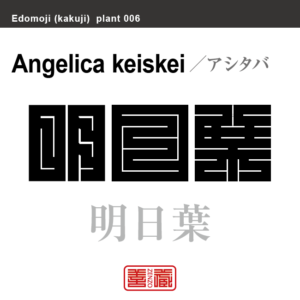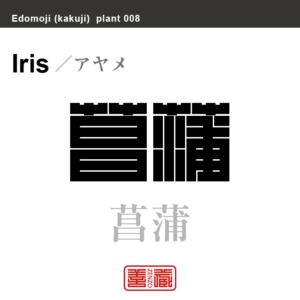朱頂蘭 アマリリス 角字で花と植物の名前、漢字表記

朱頂蘭
アマリリス
英語: Amaryllis アマリリス
Unicode: [朱_0x6731][頂_0x9802][蘭_0x862D]
アマリリスは、ヒガンバナ科ヒッペアストルム属 Hippeastrum の植物の総称です。原種は中南米・西インド諸島で、約90種があり、数百種類の園芸品種が作られ、現在もその数は増え続けています。
地中に球根を形成する多年草で、まっすぐに伸びた茎の先に、ユリに似た大きい花(花の色は白・赤・薄紅・淡黄など)を2~4個つけます。栽培する場合は球根を植え付けて育てます。春咲き種は4月~6月、秋咲き種は10月頃に花を数輪咲かせます。
その華やかな佇まいから人気の高い球根植物で、豪華な大輪や八重咲きの花が多く出回りますが、花びらが細くて繊細なタイプや愛らしい小輪も見かけるようになりました。
ヒガンバナ科のほかの植物と同じく、球根などにリコリンを含み有毒です。
花言葉は「誇り」「おしゃべり」「輝くばかりの美しさ」です。
角字とは?
江戸時代に誕生した角字は、正方形のグリッド内にほぼ水平・垂直のラインのみで文字(漢字)が表現されるグラフィックアートです。
正方形という限られた空間の中に、あらゆる文字を閉じ込めようとするグラフィックデザインは、前述した、ミニマムな物に対する日本人特有のこだわりが随所に感じられます。
そのシンプルで有りながら、奥深い「角字」は多くの日本人を魅了し、お祭りで着る半被や印半纏(しるしばんてん)と言われる着物や、商標、印鑑、家紋、看板デザインなどに今日まで数多く使用されてきました。
What is Kakuji?
There is a style of penmanship called “Kakuji” in Japan. Edo-born Kakuji is a graphicart that expresses letters (kanji) with almost horizontal and vertical lines only.
The design which bases on many straight lines seems simple, or too plain even at its first glance; yet this beautiful artistic penmanship that encompasses the aesthetic of the Japanese in the Edo era, also known as “Iki”, and playfulness has long been inherited to this day, thanks to the masteries’ long years of efforts in training and refinement.
Kakuji with its simplicity and depth is used for designs such as trademark, hanko stamp, family crest and signboard.































































 2文字コード:MZ 3文字コード:MOZ 数字:508 ITU:258 ccTLD:.mz
2文字コード:MZ 3文字コード:MOZ 数字:508 ITU:258 ccTLD:.mz







































































































































